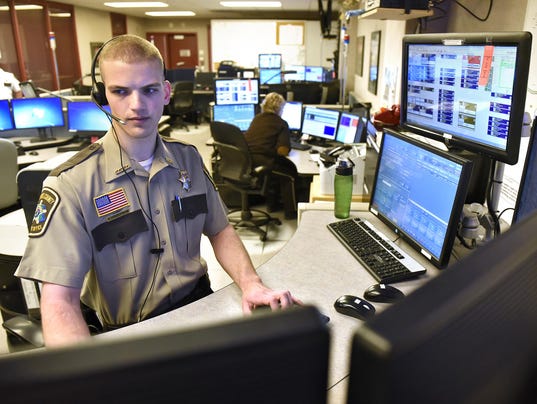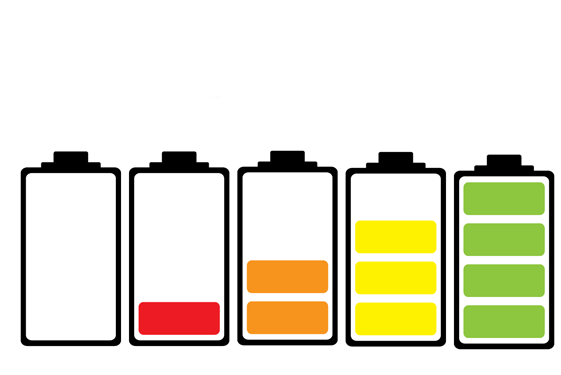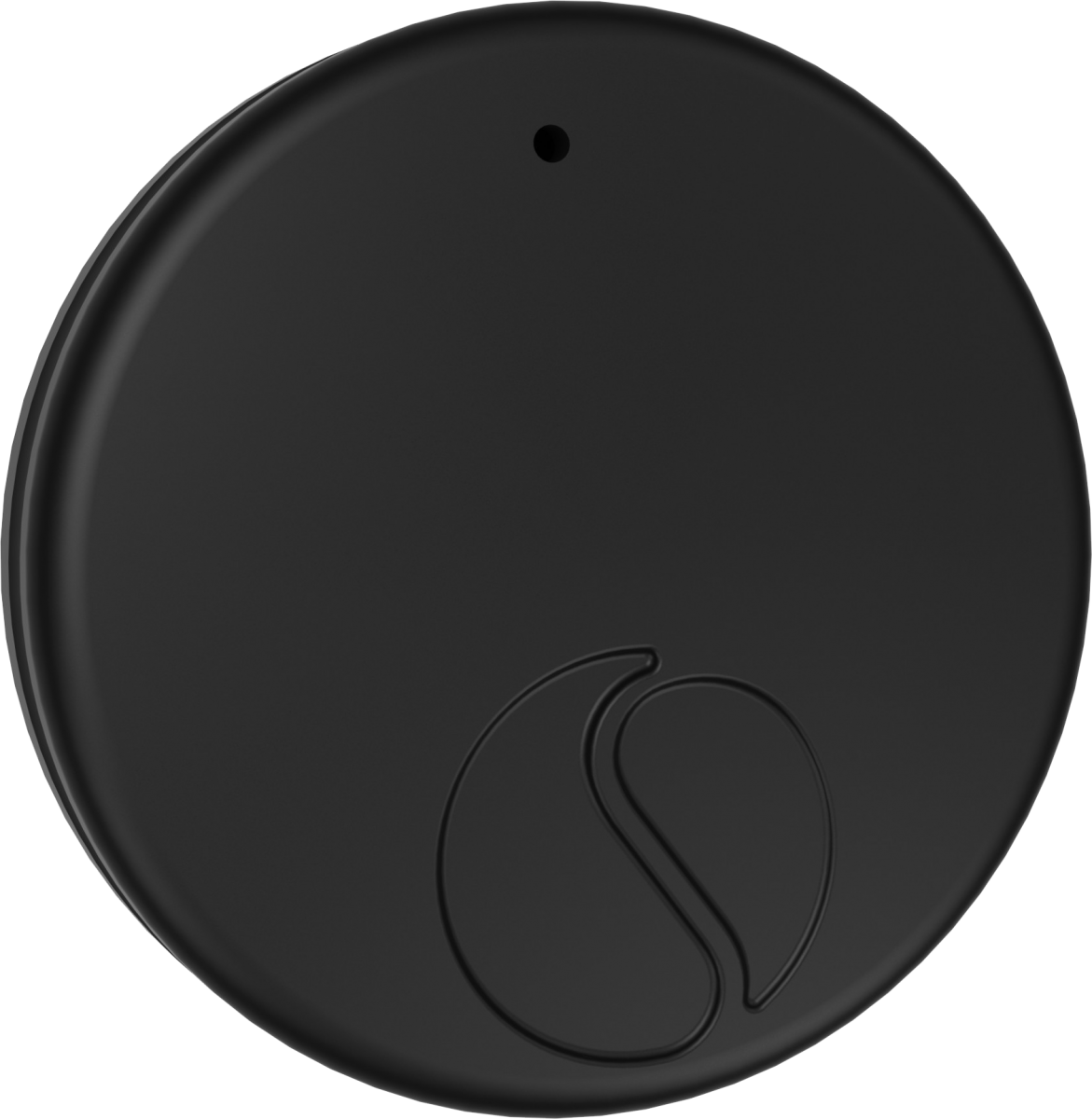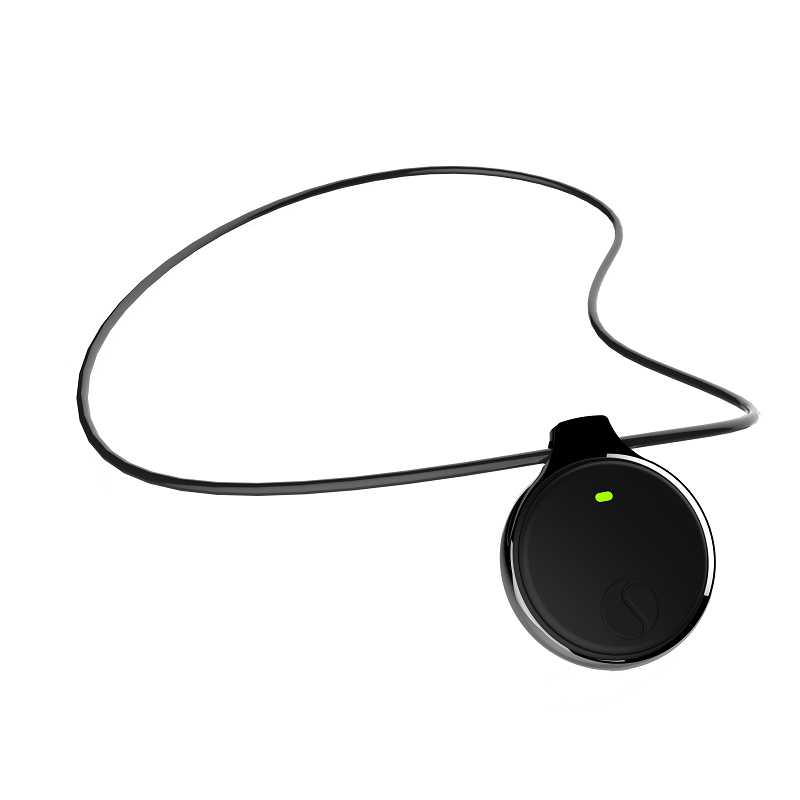Is Your Loved One At Risk for Wandering or Elopement?
December 28, 2018
For family, friends and professional caregivers, nothing is more frightening than the idea of a person with autism, suffering from dementia, or memory loss wandering the streets unable to care for themselves and incapable of finding their way home. Elopement and wandering are major concerns in most healthcare settings and if you are dealing with a long term care resident, it’s something you should be aware of as well.
First, let’s define our terms
Unsafe Wandering is any wandering that is disruptive to other residents, neighbors or housemates, or places the resident, or others at risk of bodily harm.
Why wandering occurs
While patient and resident behaviors vary greatly from person to person, common behavioral traits are often observed in patients with a tendency to wander and can included the following:
· They express boredom, become agitated, or experience stressful situations.
· Subject becomes disoriented, or confused with their surroundings.
· For seniors, they may be reenacting past patterns, such as leaving for work, or shopping.
· Mental links or associations with traveling, such as seeing a door, hat or coat.
Is your loved one at risk for wandering or elopement?
In addition to the warning signs mentioned, there are specific instances which tend to increase the desire to roam and can lead to unsafe wandering and eventual elopement. Dementia patients and those with diminished cognitive abilities are not the only ones that wander. Residents with normal cognitive abilities can be prone to it as well.
· Patients or residents that have recently moved to a new setting, or had extensive changes to their environment are much more likely to attempt elopement.
· Cognitively able patients may become frustrated with perceived lack of care, or changes in their routine they fine confining, or irritating.
· Patients or residents that are not as physically compromised, but may still require close supervision are a special risk, since they are capable of moving quickly and taking action to conceal themselves once eloped.
Risk management is the key to finding balance
In almost every case, for an able bodied patient, constant hands on supervision is just not practical. It stresses the resident and caregivers beyond what it reasonable. So, how can you find a happy medium to make sure your loved one stays safe, while giving them as much freedom as they are capable of?
· Instituting a solid plan to prevent wandering and elopement, and a response protocol for incidents, can help alleviate some of the stress.
· Tools such as wandering alerts can help to establish a safe perimeter and allow caregivers to get other work done, knowing those in their care are safe. https://www.youtube.com/watch?v=MPsJU2uwOs0
· Panic alerts that give the patient a way to call for help are also useful in conditions where they may be confused or disoriented. https://www.youtube.com/watch?v=qVKFVOlMaxE
· Setting up strict controls that can be gradually relaxed until you find the level of supervision that works best for your loved one is a good place to start.
By providing them with a familiar, structured, engaging environment, many motivating factors for elopement can be reduced, or eliminated. Work with your loved one when possible to come up with a plan that gives them what they want, while providing the security they need.
Resource links
https://www.nccdp.org/WanderingBehavior5-10-05Final.pdf
https://www.patientsafety.va.gov/A_Toolkit_Patients_At_Risk_for_Wandering.asp
A 5 Step Strategy for Developing Aging in Place Planning
December 28, 2018
Most seniors are resistant to the idea of giving up their autonomy in favor of invasive care and a lot of work is being done to build the infrastructure needed for more of them to maintain their independence as long as possible.
Start the conversation early
If you are a senior, a family member of a senior, or a care provider, it’s up to you to start making these plans as early as possible. By discussing your options and putting a plan in place before health or mental state deteriorate, you can make the most of this vital time in life.
· It may be uncomfortable to think about at first, but having some control over what happens next is the best way to live a full life that best suits you.
· By allocating resources and setting up tools like long-term care insurance before they’re needed, the transition into more managed care will be easier.
· Sites like AgeinPlace.com have great resources to help start the conversation
Assess the possibilities
We’d all like to live our lives in luxury, but there are nearly always physical and monetary constraints that have to be considered. Taking a realistic approach early on, can help make use of tools that take time to set up, like government programs, investment tools and insurance.
· Start with the resources of the senior. This provides a jumping off place to look for services that can help to fill any gaps.
· Apply as early as possible for government and non-profit programs. All have limited funds and grants and funding take time to get approval for. Many have waiting lists.
· Groups like the Administration on Aging have resources that can help.
Incorporate autonomy
The whole point to aging in place is to maintain as much of your normal life as is possible. By creating an eco-system that gives the senior as much decision making power for as long as possible, you can sustain normality for them.
· Environmental planning is a major factor here. Homes, vehicles and properties often require adaptation to plan ahead for possible mobility issues and specialized equipment needs.
· Making these choices early can make the most of available resources and include the senior in the planning as much as is practical, so that they take ownership in the changes.
· Tools such as medical alert systems, for wandering and elopement can aid in making aging in place possible, by providing safety and peace of mind.
Plan for escalating care
While many people are able to live long, healthy and productive lives without experience health setbacks, care often needs to escalate toward the end of life. Include this in your planning to allow decisions to be made beforehand that can ease the transition.
· Putting the needed adaptations into place early will help facilitate more invasive care in the residential setting, if it becomes necessary.
· Discussing the residents wants and needs early can help build a framework for more difficult decisions later.
Know when to transition
Unless the senior is independently wealthy and able to afford around the clock, hospital grade care, or has family able and willing to provide that, the time may come for transitioning into a managed care, or nursing facility.
· Prolonging the transition can carry significant risks for injury and allows assets, such as homes, to deteriorate, often losing value.
· Having adequate care can be just as valuable to a senior’s state of mind and quality of life as autonomy, if not more. Talking about it, before it becomes an issue allows them to have as much input as possible.
Resource links: https://www.care.com/a/strategies-to-age-in-place-1108170343
https://www.michigan.gov/documents/osa/ICMA_SResourceList_419343_7.pdf
Keys to Avoiding Senior Fall-related Injuries in the Summer
December 28, 2018
There are numerous health benefits to being outside. Along with the benefits of physical activity and exercise, getting vitamin D from the sun is also essential for maintaining good bone health. With the height of summer in full swing, it’s now more important than ever that caregivers or children of elderly parents are aware of the dangers that the extreme summer weather can pose. In addition, we will cover some practical measures that they can take to ensure that their loved ones avoid any falling injuries while enjoying the physical benefits of being outdoors.
Serious dangers and risk factors of senior falling-related injuries
Eleanor Kusel, a 75-year-old woman from San Francisco fractured her pelvis as a result of falling while getting out of her car. Kusel had to undergo three months in bed rest therapy, before she could finally move gradually back into her daily activities. Unfortunately, many elderly Americans who receive serious injuries like Kusel’s lose the ability to live independently because of their injuries, and almost 50% cannot fully recover. A study done by Yale University School of Medicine found that household hazards were not the major cause of falling injuries in cases of senior falling-related accidents. Although having slippery rugs or small objects lying around can certainly cause accidents, health issues such as poor vision, weak leg muscles, and strong medications were larger risk factors for falling because they negatively affected or eliminated a person’s sense of balance and strength to stabilize themselves.
Compared to the inside of someone’s home, being outside can include walking through unexpected rocks and puddles, which is common when the weather is humid and prone to bouts of rainfall. If unprepared, these outdoor elements can add many tripping and slipping hazards to a simple walk. However, going for walks and getting exercise outdoors is still very much a possibility for seniors. Being prepared and only going outside during ideal hours are good methods that seniors can implement so that they can continue to get the physical exercise they need to prevent falling in the future.
Prevent falls by staying fit to gain strength and balance

The key to preventing fall-related injuries in seniors is getting exercise and maintaining leg muscle strength. The little challenges that come with walking outside can actually help to improve your overall physical health. Physical activity is important for people of all ages, but for elderly people, remaining active can prevent falls and physical injuries by helping them gain leg muscle strength to help stabilize and improve balance. Weak leg muscles and a poor sense of balance are a couple of the biggest causes of serious senior falling injuries. Seniors should also consider wearing flat, wide-toed shoes or shoes with good support and thin, non-slip soles for extra balance when going for walks outside. In the cases of thunderstorms or other severe weather, remain indoors until it passes. Thunderstorms often scatter branches and create excessively muddy areas that are not productive to walk in. Many seniors also take up Tai chi because it builds better balance and strength, and it could also be practiced at home or outside when the weather is suitable.
Keep hydrated to decrease the risk of falls and injury in hot weather

Hot weather can result in dehydration or other heat-related illnesses. These conditions often cause disorientation and dizziness, which can result in falling and injury. Dehydration is a risk factor of senior falls because it can cause poor physical reaction at the time of a physical injury, and it could also delay the recovery process after an injury is sustained. Seniors are particularly at risk for fall-related injuries brought on my dehydration, so it is very important to stay adequately hydrated throughout the day. In addition to drinking enough water throughout the day, planning morning or evening walks outdoors when the sun and heat are less intense is another good way to avoid dehydration and illnesses brought on by heat. Eating calcium-rich foods or taking calcium supplements also helps build bone strength and speed up bone recovery in addition to reducing the risk of hip fractures.
Embrace innovative technologies to prevent and minimize fall-related injury
Roy Atamanuk, a 73-year-old retired lawyer from St. Catharines recalls his bewildering fall on a Thanksgiving night during a visit at his daughter’s home in Buffalo. Atamanuk remembers wondering what had happened as he lay on the floor. He felt at a loss for any action that could prevent similar incidents from happening again in the future. Fortunately, researchers and engineers have acknowledged Atamanuk and the one-third of American seniors that experience one fall each year. Simon Fraser University researchers say that innovative technologies can significantly reduce the $3-billion cost of fall-related injuries that the Canadian government is billed each year. Innovative technologies such as energy-absorbing bouncy flooring, hip-protectors, and integrated emergency alert systems like SafetyAnchor offer at-risk seniors with safety measures that help prevent or minimize injuries and complications that result from falls. While specialty flooring is targeted for in-home falls, hip-protectors and alert systems can also provide protective measures outdoors. SafetyAnchor offers personal protection anywhere, and at-risk seniors can feel safe getting the exercise they need, while knowing that loved ones and caretakers are always within reach at any time of the day (read How SafetyAnchor Works or watch the video tutorial). These preventative technologies can ensure caretakers the safety and protection of their loved ones, and they can also protect institutions and facilities by securing the safety of their valued long-term residents.
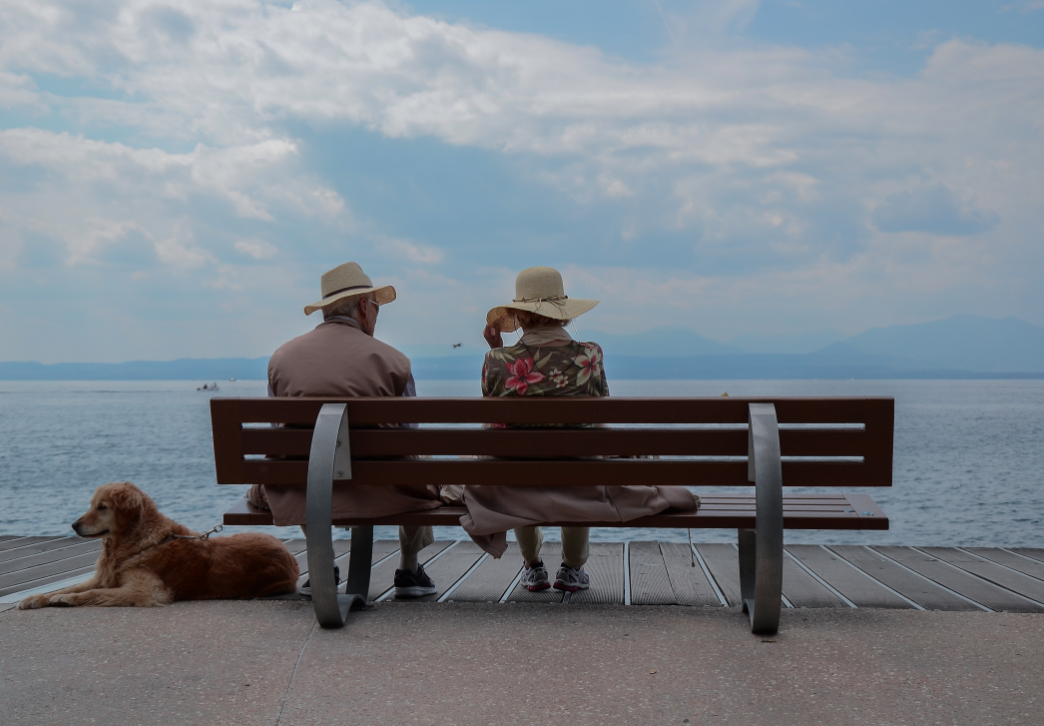
Related Articles:
Critical Wandering: The Real Danger of Alzheimer’s
Sources:
https://www.ncoa.org/news/resources-for-reporters/get-the-facts/falls-prevention-facts/
https://www.ncbi.nlm.nih.gov/pubmed/21970910
https://healthcare.utah.edu/healthfeed/postings/2015/06/062415_summer.falls.php
https://www.alzinfo.org/articles/people-alzheimers-high-risk-falls-injury/
https://www.ncbi.nlm.nih.gov/pmc/articles/PMC2290997/
https://www.safetylabs.org/b2c/index#seniors
https://www.youtube.com/watch?v=MPsJU2uwOs0
https://www.safetylabs.org/default/working#how_does_safety
Photo Courtesy:
[1] https://unsplash.com/search/elderly?photo=YDIgMrc7Xsc
How has IoT brought on an Evolution in Safety?
December 28, 2018
By Giang Nguyen & Sanjay Chadha
iot cloud
Fundamental to IoT is the instant collaboration that happens between these smart devices. The beauty behind having a network of interconnected devices is that they can all work together to provide real solutions that are much greater than the sum of their parts.
Pre-IoT systems set Limitations on Safety
IoT based safety systems have adapted to the needs of modern customers. As users, we’re more sophisticated and more connected today than we have ever been before, and traditional security systems just can’t deliver the necessary control, mobility, and accuracy that we need to feel safe. For instance, pre-IoT home security systems automatically called authorities when anything irregular occurred and had huge false alarm rates, which resulted in many users actually preferring to leave their systems off rather than dealing with its problems. In personal safety, pre-IoT safety systems used telephone lines and call centers to respond to emergency situations, and their range often limited users to their home or yard.
IoT systems: better connected and enables better control over our Safety
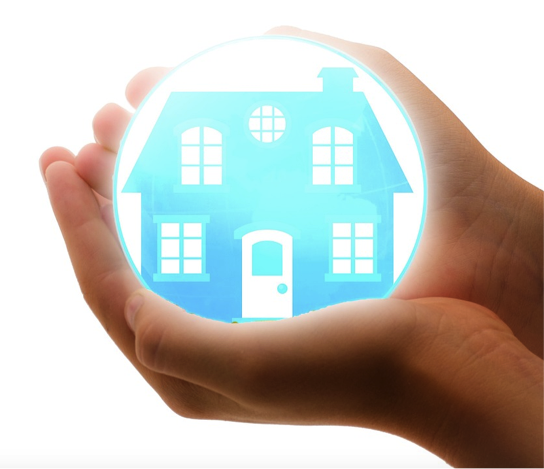
IoT based smart products are always connected and constantly communicating with each other. They regularly exchange information using wired and wireless networks, which helps make our lives easier and safer. When IoT based smart home security systems are used to safeguard our home or possessions, it’s akin to having our favourite reliable friend dutifully watching over our home or pets in our absence. Except it’s actually way better than that, because unlike our well-meaning friend or neighbour, smart home security systems are always present and are ready to instantly alert us of any signs of danger.
Smart products, like Nest Lab’s smoke and carbon monoxide alarm, sounds an alert when it detects high levels of CO, and then warns us of the location of the danger. It’s no wonder that Google acquired Nest Labs for a whooping $3.2 billion! Other companies like Canary offer connected smart home security systems that are now a part of a growing trend: using IoT technology to create safety solutions to protect what’s most valuable to us.
From Home Security to Personal Safety
The key features of smart technology are that they’re always connected, they learn to adapt to our lifestyles, and they can be remotely managed. When these capabilities are applied to personal safety, we can be assured that there’s a whole network working with us to protect the safety of our loved ones.
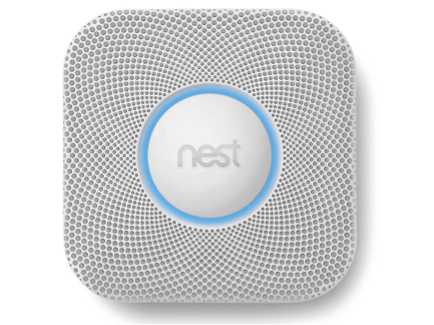
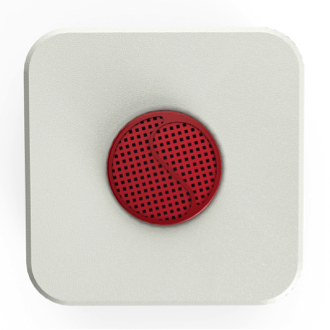
Nest’s CO Detector Anchor Image via Safety Labs
Nest and Canary’s home security technology can be monitored and managed via our smart phones. Similarly, Safety Labs’ medical alert system, Anchor-PA, provides continuous safety for the elderly by keeping them connected to their loved ones at all times. Medical alert systems have come a long way from the older telephone operator-based models that required individuals who were injured or in danger to go through call centre representatives to help alert family members, neighbours, or emergency response services (e.g. 911). IoT based medical alert systems like Safety Anchor Panic Alert proactively send updates or alerts directly to designated family members, friends, or emergency services such as 911, depending on the situation. This bypasses the middleman, which saves valuable time and instantly provides users with the most appropriate support for their situations. IoT is a great asset in other areas, as well. For instance, the Wandering-Protection system from Safety Labs provides peace of mind to caregivers for people with Dementia, Autism, and children by generating an alert when they’ve wandered outside of a preconfigured “safety zone.”
Smart safety systems like Canary, Nest’s cameras and detectors, and Safety Anchor provide protection that adapts to the lifestyles of modern users by applying the principles of IoT.

Related articles:
Keys to Avoiding Senior Fall-related Injuries in the Summer
Sources:
https://datafloq.com/read/internet-of-things-iot-security-privacy-safety/948
https://dupress.com/articles/internet-of-things-iot-in-medical-devices-industry/
https://www.wired.com/insights/2014/11/the-internet-of-things-bigger/
https://internetofthingsagenda.techtarget.com/definition/Internet-of-Things-IoT
https://internetofthingsagenda.techtarget.com/definition/IoMT-Internet-of-Medical-Things
https://www.ul.com/inside-ul/medical-alerts-reimagined-with-iot-technology/
https://www.safetylabs.org/default/about
https://www.ul.com/inside-ul/medical-alerts-reimagined-with-iot-technology/
Photo Courtesy:
[1] https://pixabay.com/en/network-iot-internet-of-things-782707/
[2] https://pixabay.com/en/house-insurance-protect-home-care-419058/
[3] https://nest.com/smoke-co-alarm/meet-nest-protect/
[4] https://www.safetylabs.org/
[5] https://unsplash.com/@jaketthacker
Why Phone-line Medical Alert are being replaced by Internet-based Systems
December 28, 2018
By Sanjay Chadha & Giang Nguyen
The Medical Alert system was first introduced in the 70s, way before the birth of the Internet as we know it today. During its beginnings, Medical Alert systems used telephone lines to connect care receivers to emergency assistance. A device that was always conveniently within reach and that used telephone lines to immediately summon emergency help was game changing. It brought awareness to a real and potentially tragic problem and offered a viable, cutting-edge solution.
This professional was the operator, who would become responsible for coordinating the safety of people who called in for help via the button on their transmitter. After assessing the level of the caller’s emergency and determining the most appropriate resource, the operator would either call 911 emergency services, local emergency departments, or next of kin and then proceed to coordinate their safety, including making sure that emergency staff has access to the building number or the keys to the caller’s apartment. In the case that the emergency is assessed and deemed to be manageable by family and friends, the operator would coordinate with those people instead.
A High Cost for Companies and Customers

This dependency on the operator to coordinate emergency assistance made them critical to the caller’s safety. For this reason, operators had to be well trained and because of that, they were also well paid and were required to work in very secure and expensive operation centers. Both because of the large investment that companies put into these centers and the high salaries of the staff within them, Medical Alert companies had to hike up the costs of their systems by charging customers upwards of $30 per month to use them. To attract new customers, companies also started to give out free products for customers who subscribed to their monthly service.
Even when newer upgraded Medical Alert systems were designed and created, the old model that put the operator at the center of the caller’s safety didn’t change–perhaps unsurprisingly, since hundreds of millions (if not billions) of dollars were already invested in the infrastructure of this model and in the training and salaries of these operators.
Rise of Internet-based Medical Alert Systems
Skip ahead to the 90s, when the Internet as we know it today became almost ubiquitous worldwide. Not only affecting individuals, the Internet had also changed the ways companies worked, from the delivery mechanism affecting business models to many verticals. It also started to creep into home monitoring systems by changing the way those systems alerted homeowners. New Internet-based monitoring systems allowed people to purchase DIY (Do-It-Yourself) systems that sent alerts directly to their mobile phones, which meant that they could forego monthly monitoring service fees. Canary Smart Home Security and Google’s Webcam are two such systems that enable homeowners to take the safety of their homes into their own hands.

With the arrival of the Internet, the job of the previously essential operator could now be easily managed by an intelligent piece of software capable of coordinating the safety of the person in an emergency. In fact, a software-based system can alert and inform friends and family even faster and more intelligently than older operator-based systems. This is because software-based systems can use multiple channels such as text messaging, smart phone notifications, and automated calls to ensure that the appropriate person is reached. It can also immediately connect the caller to 911 if needed. Rather than the step-by-step protocol that a monitoring operator must follow, software-based emergency response systems can use pre-programmed contact information to reach multiple people using multiple channels at the very instant the emergency happens. It’s hard to argue that Internet-based systems are much more efficient than their older counterpart: they can decrease the time it takes for the caller to be safely assisted and reduce human errors in the process. It’s for those reasons that today’s connected cars have also installed similar 24/7 automatic crash notifications. For businesses and customers, they can also substantially reduce the costs of providing and receiving such essential services.
A drawback of older Medical Alert systems is that they only kick in after an emergency occurs—they can’t prevent emergencies from happening because they’re designed to call for help after something has already happened. One handy aspect of modern Internet-based alert systems is that they can provide continuous safety for care receivers by sending their status and location feedback to caregivers and family members. For people with Dementia and Alzheimer’s, not waiting until an emergency occurs to send status feedback could potentially help prevent one from happening at all.
Safety Labs Anchor-PA uses the connectivity of the Internet with an intelligent cloud server that provides 24/7 medical alert safety to elderly people. See how Safety Anchor-PA works.
Related articles:
https://www.safetylabs.org/blog/27/2016/08/How-has-IoT-brought-on-an-Evolution-in-Safety
https://www.safetylabs.org/blog/21/2016/08/How-Power-of-the-community-keeps-wander-prone-people-safe
Sources:
https://www.businessinsider.com/how-the-iot-is-changing-the-manufacturing-industry-2016-3
https://money.howstuffworks.com/technology-changed-business1.htm
https://www.medicalalertcomparison.com/articles/history-of-medical-alert-systems/
https://www.theseniorlist.com/2013/01/new-medical-alert-systems-offer-mobility-outside-the-home/
https://www.weforum.org/agenda/2015/06/3-industries-being-changed-by-the-internet-of-things/
https://www.safetylabs.org/SafetyMedias
Photo courtesy:
[1] https://footage.framepool.com/en/shot/164809424-call-center-agent-contacting-adviser-hotline
[2] https://unsplash.com/@alejandroescamilla
Medical Alert Systems being replaced by Internet based?
December 18, 2018
No wonder the Medical Alert systems of those days use a telephone line to connect the care receiver to the emergency help.
Use of the telephone line changed everything and this is how; Since the person in an emergency could reach only one person at a time and only using voice call, it would be best in an emergency to reach a trained professional – the operator. This operator would asses the level of caller’s emergency and based on the emergency level and type of emergency would either – call 911 or local paramedics, fire, police or another emergency departments, next of kin and then coordinate the safety – making sure that emergency staff has access to the building, key to the apartment etc, Or in case the emergency is assessed that it can be managed by family or friends coordinate with the safety family and friends.
PERS Operator and Central Stations
This dependency on the operator to coordinate the safety made operators critical to safety. For this reason well trained and hence well paid operators were required in very secure and well designed central stations. Because a lot of investment was made in these centers and because of high costs salary of their staff Medical Alert companies needed to charge upwards of $30/month for this service also know as PERS (Personal Emergency Response System). To entice new customers these companies started to provide free products as long as the customer is subscribed to their monthly service.
Even when the newer upgraded medical alert systems were designed and created, the model of having the operator to coordinate the safety did not change – how would it, 100’s of millions if not billions of dollars were invested in the infrastructure and in training of these operators.
PERS through the Internet
Then came “The Internet” – The Internet changed everything, it changed the delivery mechanism of products and services affecting business models in most verticals. The Internet also started to creep into monitoring services of homes where people to forego their monthly monitoring service fees, started to purchase DIY (Do-It-Yourself) Alarm and webcam systems and have the alerts come to their mobile phones. Canary home security and Nest’s Webcam are two such systems enabling home owners to take safety of their homes in their own hands.
Operator in Internet world
You may notice that the job of the operator can now be easily managed by an intelligent piece of software which can coordinate the safety of the person in an emergency. Or may I say a software based systems can alert and inform friends and family faster and more intelligently than a human operator. This system also directly connect the caller in need directly to the trained staff at the well funded 911 emergency services reducing the need for the “operator”, giving many customers a choice of low cost monitoring of their loved ones. This system uses multiple channels such as Text Message, Smart phone notifications, automated calls etc, It can also connect the caller to 911. This all can happen at the very instance the emergency happens, as opposed to one-by-one steps a monitoring operator follows.
Advantages of Internet based Medical Alert Systems
Such internet based systems not only improve time to safety, reduce human errors and reduce costs but also provide benefits not possible with traditional telephone line based systems – such as; Continuous Safety – Major draw back of existing Medical Alert systems as explained here is that these systems kick in only when an emergency occurs. An Internet based Medical Alert provide continuous safety status of the person in care; Connects Caregivers & Emergency Staff – When any family member acknowledges the alert, that alert can be sent to person in care and other designated care givers are aware that help is on the way.
Safety Labs Anchor-PA using the connectivity of the internet with an intelligent cloud server provides always available medical alert safety to elderly. See how Safety Anchor-PA works.
What is Crowd GPS and How does it Help Keep Our Loved Ones Safe?
December 18, 2018
The Power of the Crowd, or crowdsourcing, is a strength that’s created when members of a community work together toward a shared purpose. The result is a solution that’s much larger than the sum of its parts. Today, the Power of the Crowd has been leveraged in many practical applications that help to make our lives easier every day.
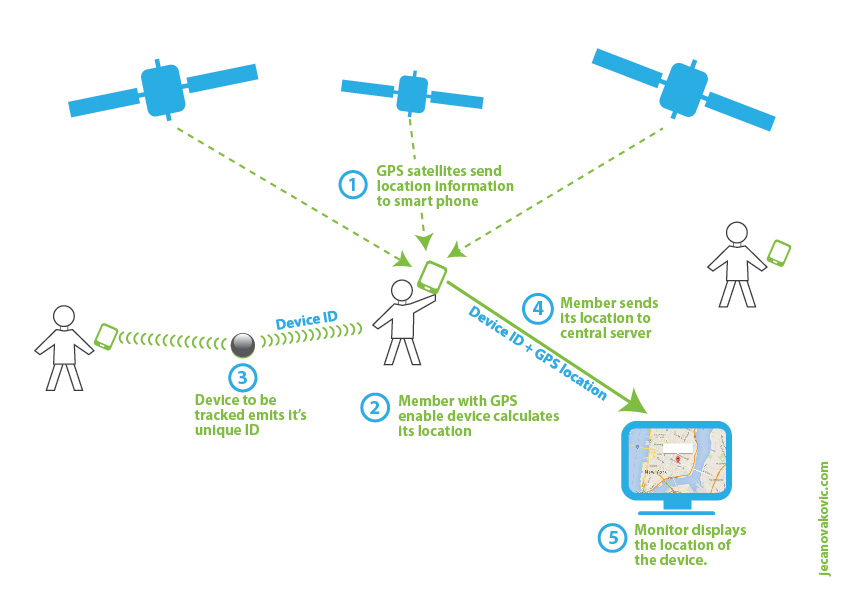
Applications of the Power of the Crowd
Crowdfunding companies such as Indiegogo and Kickstarter allow enthusiasts to help up-and-coming startups get enough funding to launch their products. Other companies like Waze, a Google company, uses the crowd to help people find the fastest route to their destination. Quora uses its 100 million monthly users to help people find answers to their toughest questions. Uber uses the Power of the Crowd to provide ridesharing solutions and companies like The Tile App and TrackR help people find their lost items by allowing their users’ devices to communicate with each other. The crowd’s power lies in its numbers, and this practice is well documented in Mike Eagan’s article, “Why the Mob Rules.”
GPS, Smart Phones, and Safety
GPS, or Global Positioning System, uses a set of orbiting satellites to trace and send precise location details back to Earth. These signals are obtained by GPS receivers, and are used to calculate the exact position of the receiver. Smart phones today are equipped with GPS receivers that use signals from the orbiting satellites and then calculates the location. Gathering GPS signals and calculating location takes power, so GPS receiver chips cannot be inserted into low power devices such as trackers and safety pendants.
That means that when it comes to tracking someone’s location for safety reasons, such as search and rescue situations, only those with GPS-enabled devices that are within range and have sufficient battery life have a hope of being picked up via GPS.
Crowd GPS
When the Power of the Crowd is applied to GPS, the community’s collective devices can be leveraged to fill in the gaps. Those without smartphones or whose phone battery has died can still be tracked with some help from the crowd. In a Crowd GPS system, certain low power devices without traditional GPS capabilities can also be tracked.
These devices emit a RF (Radio Frequency) signal uniquely identifying the device by emitting its ID. Now the crowd can come to the rescue. When a smartphone with an accompanying safety app comes into contact with this ID, it uses its current location and then sends this ID, along with its location, to the central server. The central server now has the device ID and its precise location. This creates a crowd based GPS solution that enables non-GPS devices to be located. It is important to note that if the device is not in proximity to any participating smart phone, it will not be located. This is why the breadth of the community is important to the success of a Crowd GPS network.
Crowd GPS and Safety from Wandering
To protect a person from wandering away and getting lost, that person can simply wear a small device. When the person wanders away too far from home or another safe area, that device emits a unique ID. When any member of the crowd GPS network comes within 100 meters of the wanderer, their smartphone safety app would pick up the signal and send it to a global server to be sent to the caregiver along with its location. This network could help save people who are at risk of wandering off, including people with Dementia and children with Autism.
This vision of a Crowd GPS network safeguards people from wandering and getting lost, and It’s the concept behind Safety Labs’ Anchor-WP. Wandering Protection (WP) is a system that installs in homes and (digitally) tethers itself to the wearable device. Once the person wanders too far, the central Anchor system will alert the caregiver and registered friends and family. The device then emits the unique ID which would be scanned and transmitted back to the caregiver by a member of the safety community.
What’s Next – A Network of Networks
Sanjay Chadha of Safety Labs envisions that one day these disjointed Crowd GPS networks will cooperate to increase the total membership and spread of its member community. Time will tell if separate Crowd GPS networks will cooperate to create a large Crowd GPS network, which, if large enough, could be used to track anything.
Ideas to enhance existing Medic Alert system
December 18, 2018
“Old is gold.”
The solution involved wearing a bracelet or a necklace containing a unique ID. If the wearer of the bracelet or necklace finds themselves in an emergency situation, first responders, such as a paramedic, could use their ID to contact MedicAlert’s call center in order to retrieve the wearer’s particular medical history and other important information that help them assist the person.

The image shows how the MedicAlert system works.
How are MedicAlert ID Bracelets Outdated?
- MedicAlert is an “Out of Sight, Out of Mind” approach. ID bracelets run the risk of being hidden behind clothing and not getting noticed when they’re needed most–in an emergency situation. Which brings us to the second reason…
- MedicAlert’s wristbands and necklaces are non-electronic devices in today’s world of wearables. Since first responders must be able to quickly notice the ID in order to get the information they need, hard-to-see ID bracelets present opportunities for mishaps. Wearables remove that risk by making the information immediately available after the emergency occurs.
- Precious time is lost in trying to retrieve the wearer’s information. After arriving to help the person in the emergency, if responders notice their ID bracelet, they still need to call MedicAlert and talk to an operator in order to obtain the person’s medical history and record. This takes time away from attending the person in need.
A New Solution: The New Medical ID Tag System
Today, there have been advancements in technology that have enabled us to create a more efficient system for medical emergencies.
We have now moved on from the old ID bracelets to the new Medical ID Tag System. This system uses electronic RF devices, the power of the crowd technology, crowd GPS, and smartphones to create a powerful and instantaneous response method.
An ideal Medical ID Tag has the following important attributes:
- A small and discreet lower power RFID generating device. This enables first responders on site to automatically detect if the person in need for care has a Medical ID tag.
- Uinque RF ID enables both law enforcement officers and volunteers to assist people in emergencies, such as in search and rescue of a missing person, using the GPS on their smart phones. This is helpful because it expands the network of possible first responders from law enforcement and paramedics (first responders) to the entire smartphone-carrying community. This is also known as the Power of the Crowd.
- Enables law enforcement professionals to use a corresponding smartphone app to automatically bring up the person’s medical history. This saves valuable time and eliminates the risk of having responders miss key information.
The Medical ID Tag system is a new solution that is slowly gaining momentum. Sanjay Chadha of Safety Labs envisions it to be put to use best in providing protection for wander-prone people, such as those with Dementia or children with Autism. Safety Anchor uses the new ID system, along with tools like the Power of the Crowd to bring wandering protection, overall safety, and a peace of mind to family members.
How to Select the Right Wandering Protection System for Your Loved One
December 18, 2018
Finding and selecting the right wandering protection solution is extremely important because its job is to keep your loved one safe. To make the right decision, a number of factors need to be considered. In this article we have broken down the factors into four categories:
-
Safety
-
Usability
-
Cost
-
Additional Benefits
1. Safety
Ensuring that the system provides a promise of Safety is the most important factor when selecting a wandering protection solution. Because of that, we will deal with this factor first. The following are the key considerations that affect the safety provided by a wandering protection solution.
Underlying Technology
A system’s underlying technology is a key factor in determining its ability to provide safety. This is because the technology that’s used to create a solution defines most of its features, benefits, advantages and disadvantages. It is important that you’re aware of the different technologies in order to make an appropriate selection.
The following are the key technology that’s used to build a wandering protection solution:
-
GPS (Global Positioning Systems)
However, there are a number of practical issues that make GPS devices a less-than-ideal solution. Some of the reasons are:
-
Battery Drain: GPS is a powerful tool which causes it to be a big power drain on your device. This results in GPS-enabled devices requiring to be recharged very frequently.
-
Interference: GPS devices can be ineffective in buildings or close to buildings because they need a clear view of the sky in order to receive satellite signals.
-
Can only be supported in high-power devices: this means that GPS-enabled devices are larger and more costly. (More details on GPS and other related technologies for wandering protection is covered in Home Wandering protection systems for Alzheimer’s, Dementia and Autism Compared.)
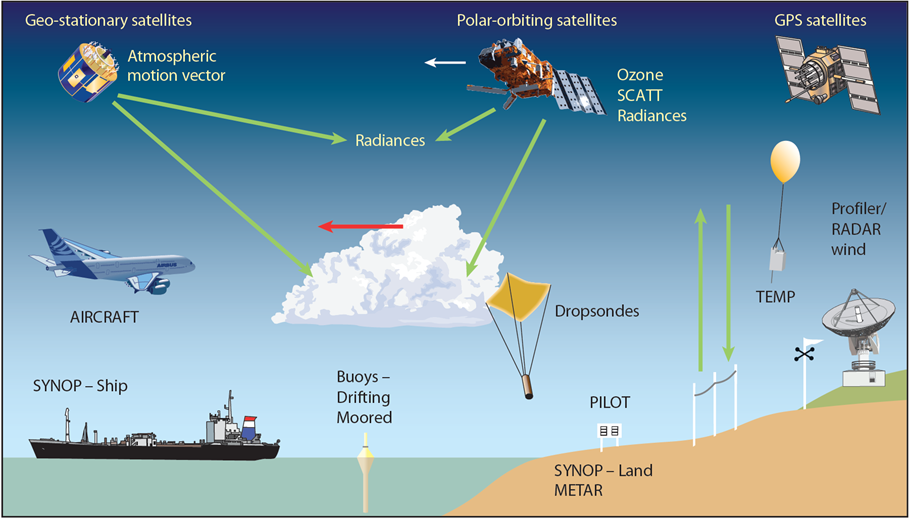
GPS is the most powerful locating technology–but it has its drawbacks.
b) Radio Frequency (RF) Emitting Devices
RF Emitting devices provide a solution to some of the shortcomings of GPS devices. In this solution, a wander-prone person with Dementia or an Autistic child wears a device which emits RF signals with its unique ID. When the person wanders away, these signals are intercepted by receivers to create a virtual GPS system. This means that even though it’s not equipped with GPS itself–and therefore doesn’t have the drawbacks of a GPS device–it can still leverage the GPS system.
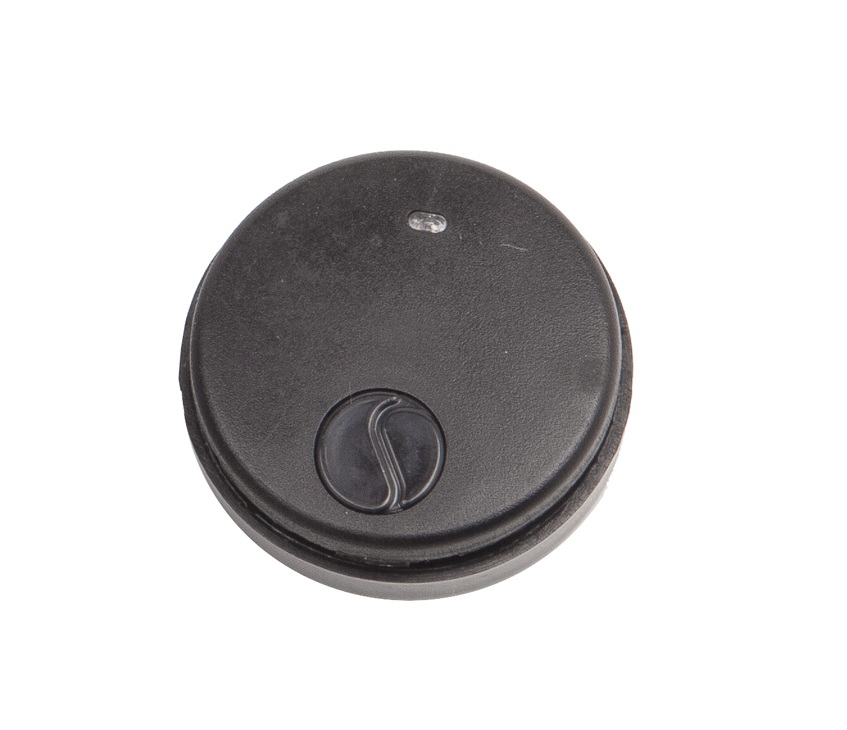 Pictured: RF Emitting Wearable device
Pictured: RF Emitting Wearable device
The following is a description of the two types of wearable RF emitting devices:
-
Proprietary RF Emitting Devices: These systems are closed systems. In other words, the receivers have to be provided by the company owning the devices. This makes creating a widespread ubiquitous system extremely costly, since it would all depend on a single company. For this reason, the location capability of SafetyNet Tracking Systems and the PIL System from Project Lifesaver may be limited.
-
Standard RF Emitting Devices: These systems emit signals based on a standard, and common devices such as smart phones can receive these signals. The non-proprietary nature of these devices make it possible to create a cost-effective, universal network of receivers. This network is sometimes called Crowd GPS and provides global wandering safety. Safety Labs’ Anchor-WP uses the “Power of Crowd” to create a global GPS system.
c) RFID based Systems
RFID based wandering protection systems are used in long-term care centers and hospitals because they are expensive and difficult to manage. Resident Guard from Accutech Security and Wander Protection from Elpas are examples of RFID based wander protection solutions for long term care centre.
d) Motion and Pressure based Systems
These systems are practical for a smaller demographic of families. They are mainly mobility monitors, rather than wandering protection systems, and they’re used for wander-prone people who have limited mobility. More on this type of system is covered in Home Wandering protection systems for Alzheimer’s, Dementia and Autism Compared.
e) Geo-Fence
Geo-Fence is an imaginary fence that’s created around a wander prone person. When the person crosses this imaginary fence, alerts are sent to the person’s registered caregivers. In our opinion, Geo-Fencing is the most critical feature of a wandering protection system because the best chance of finding someone is within the first few hours of wandering. Geo-Fencing sends an alert immediately after the person has wandered, allowing for the caregiver to quickly retrieve them. If you are selecting a GPS-based solution, make sure it supports Geo-Fencing. Safety Labs Anchor and Locate U provides Geo-Fence by creating a safe zone around the home where the Autistic child or person with Dementia can move around safely, and then alerts the caregiver when they wander outside of it. Geo-Fence is an important feature and we recommend staying away from products which do not provide it.

Pictured: Geo Fence is an important Feature of Wandering Protection and should not be overlooked
f) Coverage Area
Area of coverage is another important feature that affects a system’s ability to provide safety. We advise that you ensure your area has good coverage for both cell phone and GPS. Good coverage is important because it allows you to get the most out of your wandering protection system.
g) Search and Rescue
Search and Rescue is an important feature and must be considered. In other words, once a person has wandered away, how does the system help you find them? If the area in which the person has wandered has good GPS and cell phone coverage, then devices that can leverage GPS are the best solution to help you track the wandered person. Standard RF emitting devices like Safety Labs’s Anchor-WP is powerful because it automatically converts any smartphone into a participating receiver and creates a virtual, ubiquitous, crowd GPS community. Private networks such as Safety Net Tracking Systems are not practical for full coverage.
If you’re considering a wandering protection system for the long-term, it’s important that you take into account certain factors that affect a system’s usability. Having additional features that make it easy and effective to use can have a significant impact on your long-term satisfaction.
This chart outlines the elements that can improve a wandering protection system’s ease of use:
|
Waterproof
|
A waterproof device makes it easy to use, particularly if your loved one will be wearing it regularly. Waterproof devices will be rain resistant, and they also won’t need to be constantly removed before showers, swims, or while at the beach.
|
|
Battery Life
|
A wandering protection system’s battery life significantly affects its usability, not to mention its ability to provide safety. This is because of two reasons:
|
|
Device Size
|
The size of the device should be considered. Wearing a large device will become onerous for someone who would be wearing it all the time. This would make it inconvenient and could lead to frustration for the wearer. If it’s chunky and indiscreet, they may even opt to leave it at home on occasions.
|
|
Accessories
|
Different accessories could provide more comfort for the wearer. A choice between different accessories is important because they can be chosen based on what works best for the wearer. Accessories can include pendants, shoe clip ons, wristbands, or other clip ons (such as a purse clip on).
|
3. Cost
Make sure you understand all of the costs involved, including the following:
-
Upfront cost
-
Monthly cost
-
Ask if there are any others
4. Additional Benefits
Many wandering protection systems include additional benefits that can add to your overall satisfaction. Other questions to ask when considering a system are:
-
Does the system offer Remote Alarming?
-
Does it feature Remote Status Check? In other words, can you check remotely to see if your loved one is safe at home?
-
How does the system send alerts to you when you are away? Does it use smartphone notifications, voice calls, or text messages?
Weighing each solution against these considerations will help you choose the right wandering protection system for you. If you have any comments or questions to help you with your selection, please send them to info@safetylabs.org.


